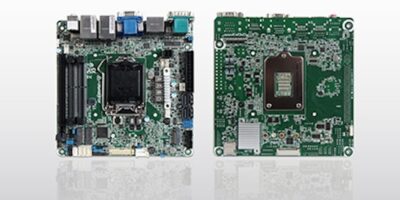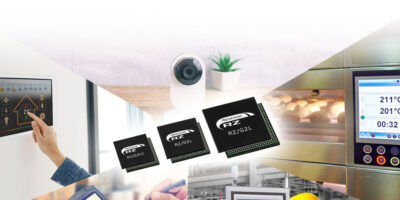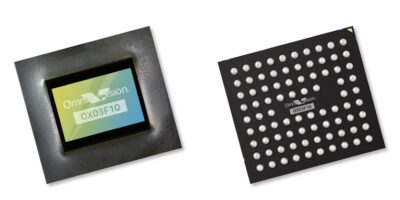At the heart of the Wade-8212 Mini-ITX motherboard is Intel’s 10th generation Core processor (formerly known as Comet Lake S), and the Intel Q470E chipset.
Portwell says that the processor combination provides enhanced CPU and graphic performance and has the capability for flexible I/O expansion.
The Wade-8212 is the latest addition to Portwell’s family of Mini-ITX form factor embedded system boards. According to Brian Lai, Portwell’s product manager, it is designed to provide powerful multi-tasking function and enhanced high-definition imaging capability with fast network connectivity of 2.5Gbit. I/O and expansion ports support multiple peripheral devices for industrial automation, robotic manufacturing, automated test equipment, semiconductor equipment, factory process control, automated guide vehicle (AGV), medical equipment, communications appliances, IoT gateway and smart transportation applications, says Portwell.
In addition to the Intel Q470E chipset and the latest 10th Intel Core i9 / i7 / i5 / i3 / Pentium / Celeron processor, there are up to 10 cores/20 threads (35W to 80W) in the LGA1200 socket. Wade-8212 also features dual-channel DDR4 2400 / 2666 / 2933MHz non-ECC SDRAM on two SO-DIMM sockets up to 64Gbyte. There is 1.0 and 2.5Gbit Ethernet (Intel I219LM and I225LM) and five COM ports – two of which are BIOS-configurable. The Mini-ITX embedded board also has six USB 3.2 Gen 1, four USB 2.0, four SATA III ports, as well as general purpose I/O and an audio jack. For expansion, the Wade-8212 offers one PCIe Gen 3 x16, one M.2 key E 2230 for wireless modules (Bluetooth/Wi-Fi), one M.2. key M 2242 / 2260 / 2280 for SSD, one M.2 key B 3042 and SIM card socket for 4G / 5G interfaces. The triple display interfaces include one DP 1.2 (4K resolution), one HDMI 2.0a (4K resolution), one VGA (resolution up to 1920×1200), one LVDS (resolution up to 1920 x 1200) connector on board, ATX power and onboard TPM 2.0 for security.
The Wade-8212 offers more than 20 per cent more cores than previous generation processors, up to 31 per cent better performance on multi-tasking compute-intensive applications, and as much as 11 per cent improved performance on single-task compute-intensive applications, said Brian Lai, product manager, at Portwell.






